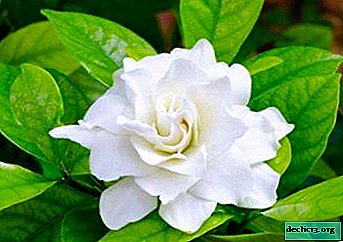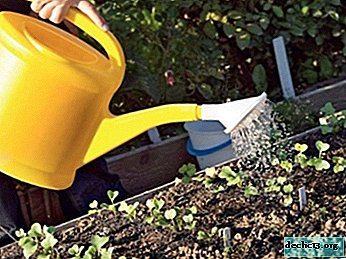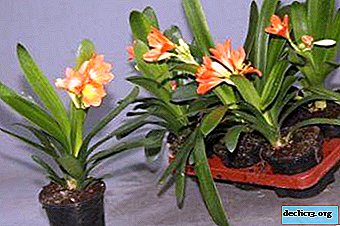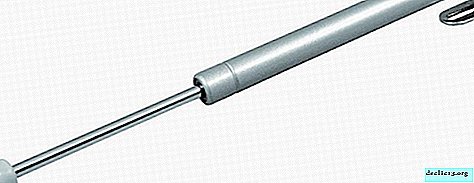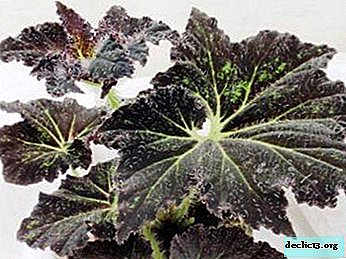Refined beauty rose Augusta Louise: a description of the variety and photo of the flower, especially growing and other nuances
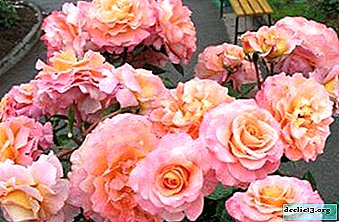
Rose "Augusta Luise" - one of the most sophisticated and beautiful varieties of roses. Since the unique color and shape of the flowers of this truly aristocratic rose is difficult not to appreciate, “Augusta Louise” enjoys special attention and love among true aesthetes.
That is why it is so popular both as a chic gift, and as a noble decoration of the garden. It is about this amazing variety that will be discussed in today's article.
History of occurrence
The variety "Augusta Louise" was named after the poetess, Countess Augusta Louise von Stolberg, who consisted in correspondence with many famous authors of her time, including Goethe.In 1999, the year of the 250th anniversary of the German poet, Hans Jürgen Evers, the leading rose breeder of the German company Tantau, introduced the world to his work - the rose "Louise Augusta", who later became the winner of many international competitions.
Description of the appearance and characteristics of the variety
Mature bush "Augusta Louise" reaches a height of about 70-120 cm. Large, rich flowers that distinguish this variety from thousands of others correspond to a sufficiently high stem of the plant. Incredible, multifaceted color attracts attention.
The shade of the petals of "Augusta Louise" is a real chameleon. Depending on the lighting, the age of the rose and its nutrition, the flower can sparkle with completely different colors of pink, peach and champagne with many overflows. At the end of the day, in the rays of the setting sun, the flowers acquire an unusually thin golden tint. It is noted that with proper care and nutrition, roses open up with a much more fresh, vibrant and complex color.
Recently, many gardeners have opted for hybrid tea roses, including Augusta Louise. Moreover, this rose variety has one of the largest flowers - up to 12 cm in diameterdue to which it looks very attractive in the eyes of connoisseurs. Flowers with a nostalgic shape, densely double, unusually lush.
Photo
Further on the photo you can see what the rose of “Augusta Louise” looks like.





Bloom
"Augusta Louise" has a wave-like flowering, but most clearly the roses manifest themselves in the first and second wave. Typical flowering times are from June to mid-September.However, in warm climates it can be long-lasting and last another month.
Succulent inflorescences have a luxurious sweet aroma that envelops in fruity notes, you just have to approach the bush. At the same time, it is very important to cut off faded inflorescences in a timely manner, this speeds up repeated flowering.
Use in landscape design
The rose bush "Augusta Louise", possessing lush flowers and exuding a bright aroma, will fit perfectly near the house, entrance or gate. Due to the luxurious fragrance of flowers, it is advantageous to arrange a bush near terraces or arbors in order to create a lively atmosphere for uplifting.
On the other hand, he will attract attention in any corner of the garden until late autumn. Perfectly combined with the varieties "Louise Odier" or "Louise Bagnet". The variety looks unusually beautiful in rose gardens and mixborders.
Care
When cultivating a rose cultivar "Augusta Louise", you must follow the cultivation technology and certain rules for caring for the plant.
Landing
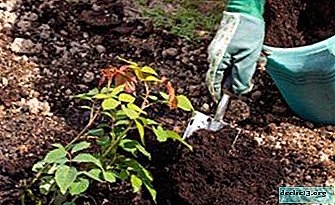 When planting the Augusta Louise roses, it is important to pay attention to the fertile areas open to good lighting.
When planting the Augusta Louise roses, it is important to pay attention to the fertile areas open to good lighting.- In no case should moisture be allowed to stagnate at the roots of the bushes, so the area selected for planting should have good drainage qualities (best of all, “Augusta Louise” grows in areas without strong or gusty winds, represented by loamy soil or sandy loam with neutral acidity).
- Landing is recommended to be done in the spring season, after waiting for the establishment of warm weather.
- In depth, the planting pit should be proportional to the size of the seedling root. Before planting, it is advisable to add a little compost or humus.
- When planting, the vaccination site should be deepened into the ground by about five to six centimeters.
Temperature
“Augusta Louise” is characterized by sufficient frost resistance - it will tolerate small frosts with dignity, and is also resistant to prolonged rains. However, if a decrease in temperature is expected to be lower - 18 °, the plant should be cut low and covered.
The species does not like intense heat. Under direct exposure to aggressive sunlight, the bush may wilt. Be sure to cover the plant in the hot season.Pruning
In the spring
It is produced annually, which helps to form the correct form of the beautiful bush "Augusta Louise". It is carried out in 2 stages:
 After the end of frost, before the swelling of the kidneys, all sick, dried stems are cut off.
After the end of frost, before the swelling of the kidneys, all sick, dried stems are cut off.- After swelling of the kidneys, healthy shoots are cut to a height of 30 cm. It is paid attention to the fact that there are at least two buds on each stem. Slightly above them diagonal slices are made. All places of cuts are disinfected at the end of work.
Debris left after trimming is burned to prevent infection by diseases and pests.
Summer
- Pruning weak shoots.
- Before the onset of August, after the appearance of the fourth sheet, pinching is performed.
- Circumcision of dried flowers.
- Pruning wild stems.
Fall
At this stage, the preparation of the Augusta Louise rose for winter begins. From the bush, all non-blooming inflorescences, green stems are cut off. Woody - left. Healthy stems trimmed to 30 cm.
Preparing for winter - warming
- The earth around the plant is loosening.
- The bush and its shoots spud.
- Soil is sprinkled to its base.
- The bush is covered with spruce branches.
Breeding
Propagate the rose "Augusta Louise" by cuttingstaken from young and strong bushes after the first wave of flowering. Only in this way is it possible to preserve all the distinctive properties of this variety.
This method of reproduction is the best for Augusta Louise.
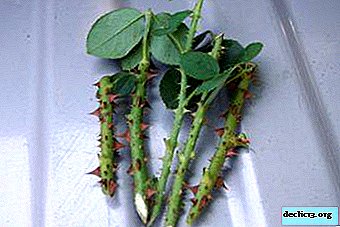 During flowering, freshly faded shoots are cut. They are cut into several parts so that each had 3-4 kidneys.
During flowering, freshly faded shoots are cut. They are cut into several parts so that each had 3-4 kidneys.- Before planting, cuts are made on the blanks: under the kidney - oblique, above the kidney - straight.
- The lower leaves are torn off and the blanks are soaked for 40 minutes in a glass with a solution of Heterouxin.
- Then the cuttings are planted in nutritious soil, watered and covered with plastic bottles or glass jars.
- Watering during root formation (approximately 30 days) planting is not necessary. Spray them on top daily.
- In winter, the cuttings are covered with dry foliage and spruce branches, and in the spring they are planted in the chosen place.
Also an acceptable option is propagation by grafting on dogrose. You can plant this variety on roses "Canina" and "Rugosa".
A rose of this variety can be rooted by taking a stalk from a bouquet and giving the latter a second life.
Diseases and Pests
Rosa "Augusta Louise" is resistant to various pests and diseases. However young bushes may be affected by aphids. In this case, it is worth using pesticides or, which is less traumatic for the plant itself, folk remedies, for example: tincture of onions or soap solution.
Rose of the Augusta Louise variety is an amazing representative of tea-hybrid roses, able to meet the expectations of the most demanding gardeners. It will be a truly royal decoration of any summer cottage or garden, capable of pleasing the eye with its lush flowering.
Useful video
The following is a visual video describing the variety of Augusta Louise:

 When planting the Augusta Louise roses, it is important to pay attention to the fertile areas open to good lighting.
When planting the Augusta Louise roses, it is important to pay attention to the fertile areas open to good lighting. After the end of frost, before the swelling of the kidneys, all sick, dried stems are cut off.
After the end of frost, before the swelling of the kidneys, all sick, dried stems are cut off. During flowering, freshly faded shoots are cut. They are cut into several parts so that each had 3-4 kidneys.
During flowering, freshly faded shoots are cut. They are cut into several parts so that each had 3-4 kidneys.